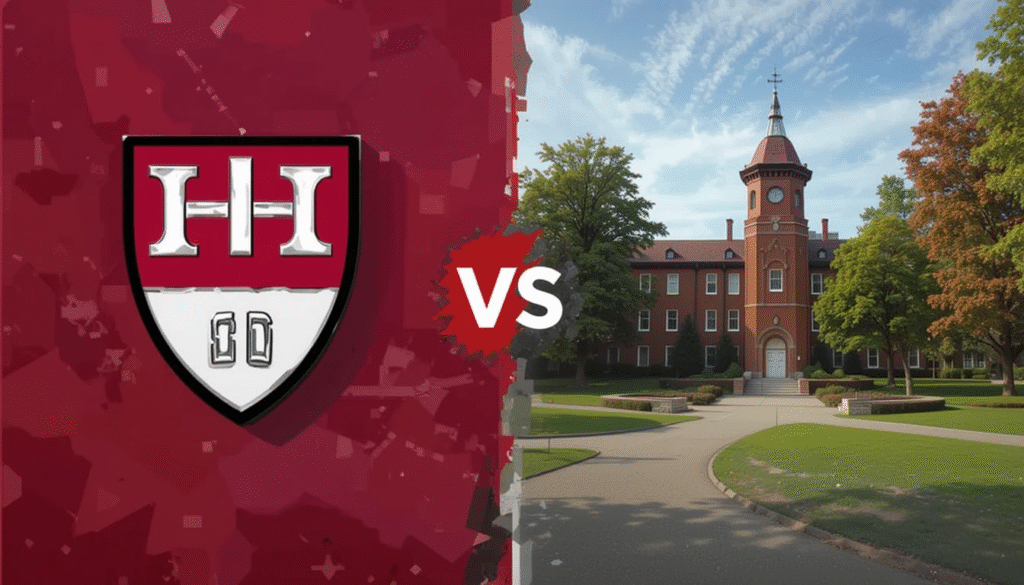Introduction
Choosing between Harvard University and Stanford University is a pivotal decision for students aiming for elite education and high-paying careers. Both institutions are globally renowned, consistently ranking among the top universities worldwide 211. However, their academic strengths, campus cultures, and career outcomes differ significantly.
This in-depth guide compares Harvard and Stanford’s Return on Investment (ROI) in 2025, analyzing factors such as:
- Graduation rates & employability
- Median starting salaries
- Long-term financial returns
- Scholarships & financial aid
- Industry connections & alumni networks
By the end, you’ll know which university offers the best ROI for your career goals—whether in tech, business, law, or medicine.

Harvard vs. Stanford: Key Differences at a Glance
Before diving into ROI specifics, let’s compare the two universities on fundamental metrics:
| Metric | Harvard University | Stanford University |
|---|---|---|
| Location | Cambridge, Massachusetts (East Coast) | Palo Alto, California (Silicon Valley) |
| Acceptance Rate (2025) | 3.2% | 3.7% |
| Median Starting Salary | $91,700 1 | $93,000 1 |
| 40-Year ROI | $3.38 million 4 | $3.87 million 4 |
| Top Fields | Law, Medicine, Business, Humanities | Engineering, Computer Science, AI, Startups |
| Notable Alumni | 8 U.S. Presidents, Mark Zuckerberg | Elon Musk, Larry Page, Sergey Brin |
Key Takeaway:
- Harvard excels in traditional high-earning fields (law, finance, politics).
- Stanford dominates in tech, AI, and entrepreneurship, with stronger Silicon Valley ties.
ROI Comparison: Short-Term vs. Long-Term Earnings
1. Median Starting Salaries
- Harvard graduates earn an average of $91,700 in their first year, with finance and consulting being top sectors 1.
- Stanford graduates earn slightly more at $93,000, largely due to higher-paying tech roles at companies like Google and Tesla 1.
Verdict: Stanford has a slight edge in immediate post-graduation earnings, especially in STEM fields.
2. Long-Term ROI (40-Year Earnings)
A U.S. News & World Report study found:
- Stanford’s 40-year ROI: $3.87 million (higher due to tech industry growth) 4.
- Harvard’s 40-year ROI: $3.38 million (still elite but trails slightly) 4.
Why the Difference?
- Stanford’s proximity to Silicon Valley gives graduates access to high-growth startups and equity-based compensation (e.g., stock options at Google).
- Harvard’s strength in finance and consulting offers stability but slower wealth accumulation compared to tech exits.
Financial Aid & Scholarships: Which University is More Affordable?
Both Harvard and Stanford offer need-based financial aid, ensuring cost isn’t a barrier for admitted students.
Harvard’s Financial Aid
- Families earning under $65,000 pay $0 in tuition 12.
- 20% of Harvard families pay nothing due to generous aid policies 12.
Stanford’s Financial Aid
- Families earning under $150,000 receive tuition-free education 1.
- Additional support for room & board if family income is below $75,000 1.
Verdict: Both are extremely generous, but Stanford covers more middle-income families.
Career Outcomes: Where Do Graduates Work?
Top Employers for Harvard Graduates
- Goldman Sachs, McKinsey, J.P. Morgan (Finance & Consulting)
- White House, World Bank (Public Policy)
- Mass General Hospital, Harvard Medical School (Healthcare) 1
Top Employers for Stanford Graduates
- Google, Apple, Tesla (Tech & AI)
- Sequoia Capital, Andreessen Horowitz (Venture Capital)
- Stanford Medicine, NASA (Research & Engineering) 1
Key Insight:
- Harvard = Power in traditional institutions.
- Stanford = Innovation in tech & startups.
Which University is Right for You?
Choose Harvard If You Want:
✅ A legacy-driven network in law, finance, or politics.
✅ Global prestige (ranked #1 in global reputation) 2.
✅ A traditional Ivy League experience with deep historical roots.
Choose Stanford If You Want:
✅ Silicon Valley connections for tech entrepreneurship.
✅ Higher long-term ROI due to tech industry growth.
✅ A startup-friendly culture with resources like the Stanford StartX accelerator.
Final Verdict: Best ROI in 2025
- For Tech & AI Careers → Stanford Wins (Higher salaries, stronger Silicon Valley ties).
- For Finance, Law, & Policy → Harvard Wins (Elite networks, stable high earnings).
- For Long-Term Wealth → Stanford Slightly Edges Out ($3.87M vs. $3.38M over 40 years).
Both universities offer unmatched opportunities, but your career goals should guide your choice.
Next Steps
- Calculate your net cost using Harvard’s and Stanford’s financial aid calculators.
- Research specific programs (e.g., Harvard Law vs. Stanford Computer Science).
- Connect with alumni on LinkedIn to gain insider insights.

Leave a Reply